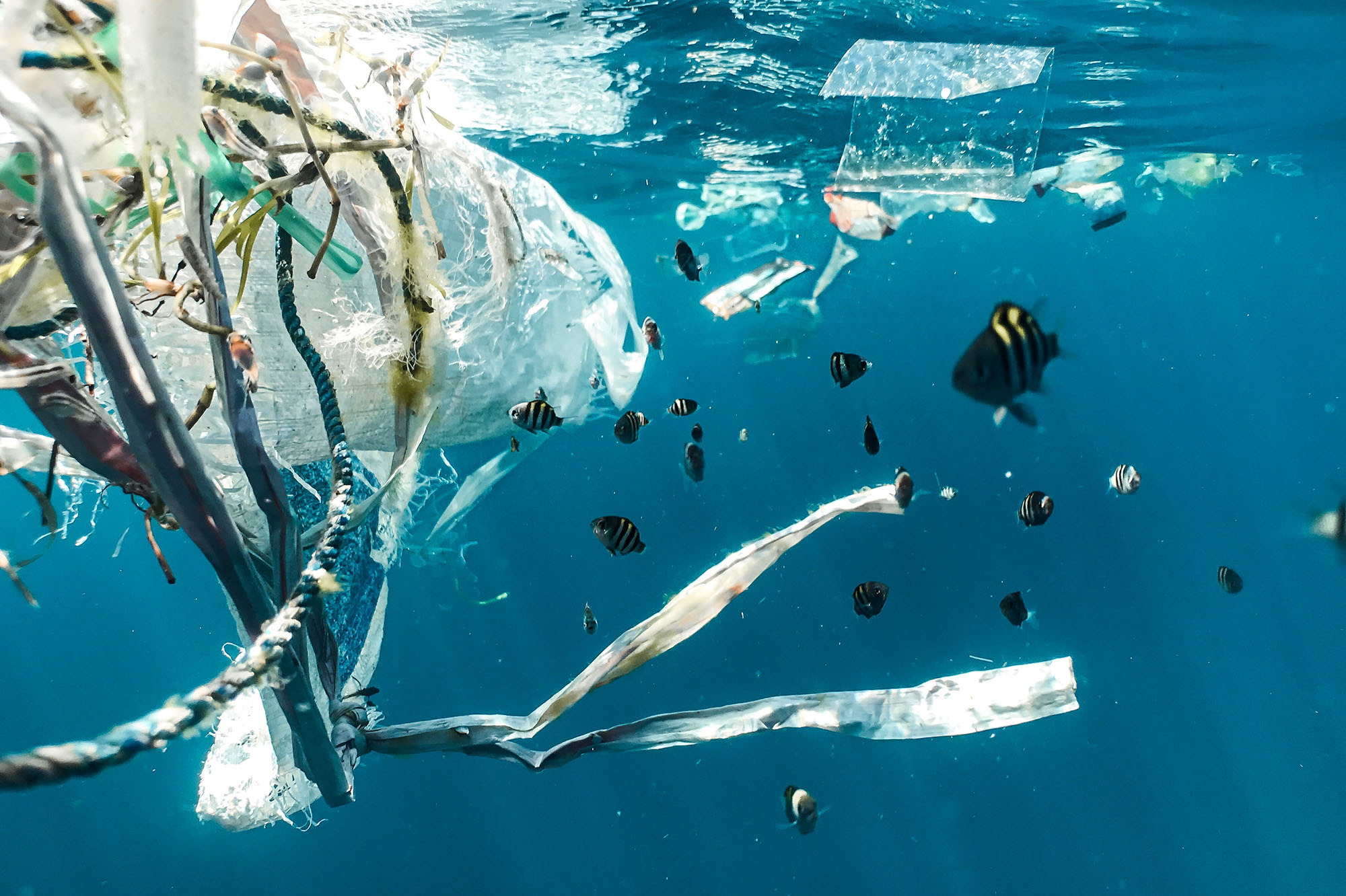Story
PML scientist highlights need for dedicated plastic litter satellite mission
22 November 2022
Dr Victor Martinez-Vicente is part of PML's Earth Observation team which has pioneered techniques for remote sensing of marine plastics

Naja Bertolt Jensen | Unsplash
Published in Nature Reviews Earth & Environment, PML Bio-Optical Oceanographer Dr Victor Martinez-Vicente calls for a prototype satellite mission to help monitor the ever increasing issue of marine plastic litter, as well as sharing lessons learnt about detecting this floating debris remotely.
Plastic litter makes up the largest proportion of human-originated solid waste material in the ocean, which is predicted to double by 2050.
Given the ecological, economic and societal impacts of marine plastic litter, there is a clear need to end this pollution, as highlighted in the March 2022 resolution by the UN Environment Assembly to forge an international legally binding agreement by 2024.
To meet the aims of this anticipated agreement and evaluate its success, global monitoring of different marine environments will be essential.
Monitoring marine plastic pollution requires repeated, long-term, global and co-ordinated observations of plastic presence, quantity and type. In situ sampling is an important aspect of monitoring but, realistically, cannot deliver at the scale necessary to provide data to fully support the battle against marine plastic debris.
Remote sensing technologies such as satellites, alongside drones and light aircraft, offer a much wider picture at a fraction of the resources needed to perform in situ sampling. Recent research has shown that satellites that measure water colour are capable of detecting aggregations of marine litter along ocean fronts. However, distinguishing between plastic and vegetation in these accumulations still requires near-field observations from ships or further investigation of other techniques.
Beyond ocean front aggregations, there are other environments in which direct plastic litter detection is accessible to colour sensing satellites. Plastic accumulations along coastal and river shorelines can also be monitored this way and therefore, a focus on these areas by a new satellite mission is recommended. If planned carefully, this mission could also benefit remote sensing studies on coastal biodiversity.
Overall, a concerted international effort to bring together a collaborative, global network for plastic litter monitoring is essential in order to help encourage nations and space agencies to invest in this future research; develop sensors that are fit for purpose; help establish baseline data; share knowledge, and avoid costly duplication.
Dr Martinez-Vicente said: “In this comment piece, I evaluate lessons learnt about remote sensing observations of litter accumulations, where this technology can be best leveraged, and call for an international collaborative effort to develop a dedicated mission to monitor marine plastic litter.”
“A good example is the proposed prototype mini-sat mission (MARLISE) by our Belgian colleagues, focusing on shorelines and plastic pollution pathways from land. This initiative needs the wider community to persuade nations and space agencies to take action. With the ministerial-level European Space Agency Council meeting this week, now is the time for action. The Ocean cannot wait another two decades for this critical support from remote sensing of plastic litter”.
This research has been supported by the European Space Agency (ESA) Discovery and Preparation FRONTAL project and the ESA EO Science for Society Open Call Project SIMPLER.
Related information
Full comment in Nature Reviews Earth & Environment